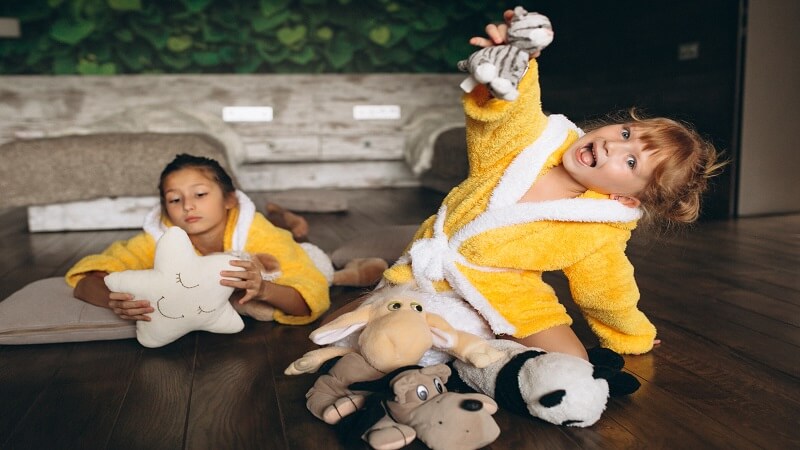For young children, the world can feel like a big, unpredictable place. They’re constantly encountering new experiences, learning how things work, and figuring out how to manage big emotions with still-developing brains. One of the simplest ways to support their growth—and ease their stress—is by introducing steady, familiar routines.
Whether at home or in a structured setting like child care Strathfield, routines help toddlers and preschoolers feel safe, understood, and more in control of their environment. That sense of security is essential for emotional regulation, independence, and learning.
Why Do Routines Matter So Much in Early Childhood?
Children thrive when they know what’s coming next. Routines help them predict what will happen in their day, giving them a sense of order and stability that builds confidence. From mealtimes to nap schedules, even the most basic structure offers emotional benefits.
Think of routines as an invisible framework. Kids may not consciously recognise it, but the rhythm of “what happens next” helps reduce anxiety, prevent meltdowns, and ease transitions—especially in environments filled with new faces, sights, and sounds.
The Science Behind Structure
Research shows that routines:
- Support language development through repetition and consistent cues
- Improve sleep patterns and appetite regulation
- Encourage the development of executive functioning skills (like memory and attention)
- Lower behavioural problems linked to stress or overstimulation
In short, predictability lays the groundwork for adaptability.
What a Routine Looks Like for Little Ones
A routine doesn’t have to be strict or complex. In fact, the best ones are flexible enough to allow for changes while still offering enough consistency to feel reliable. Here are some common areas where structure supports kids:
1. Morning Transitions
A calm, predictable start to the day helps children ease into social settings. A good morning routine might include getting dressed, brushing teeth, eating breakfast, and having a moment of calm before heading out the door.
2. Mealtimes
Eating at roughly the same times each day helps children develop hunger cues, reduces fussiness, and supports healthy eating habits. It’s also a great opportunity for connection and conversation.
3. Nap and Sleep Schedules
Predictable sleep times aren’t just for better rest—they’re key to better behaviour. Tired toddlers are more prone to outbursts, and naps can help reset their mood and energy.
4. Transitions Between Activities
Changing from one activity to another (e.g., playtime to clean-up) can trigger resistance or confusion. Having a consistent “transition cue,” like a short song or countdown, helps prepare children mentally and emotionally.
How Childcare Providers Use Routines to Support Development
In quality early learning environments, routines are woven into the day to offer both structure and stimulation. Children might not realise they’re following a schedule, but they come to expect certain rhythms: morning circle time, snack, outdoor play, rest, and creative activities.
This balance of routine and variety teaches children valuable skills:
- Time management
- Group cooperation
- Self-regulation
- Independence with tasks like packing bags or washing hands
When routines are reinforced both at home and in care settings, kids experience a smoother transition between the two and build stronger confidence in their daily lives.
Balancing Routine With Flexibility
Routines are important, but they aren’t about rigid control. Life happens. Kids get sick, weather changes plans, and sometimes everyone just needs a slow day. What matters is the underlying structure—not perfection.
It’s okay if lunch is a bit later than usual or if bedtime slips now and then. The goal is to have a general rhythm that kids can count on. That said, when things do change, explaining it in simple terms (“Today we’re going to Grandma’s house instead of the park”) helps children adjust more easily.
Building Your Own Home Routine (Without the Stress)
If your household feels chaotic and you’re wondering where to start, here are a few low-pressure tips for introducing helpful routines:
- Start small: Pick one part of the day (like bedtime) and create a simple, repeatable sequence.
- Use visual cues: Picture charts or hand gestures help toddlers remember steps.
- Make it fun: Songs, timers, or “racing the clock” can make routines feel like a game.
- Stay consistent: The more often you stick to the same order, the more intuitive it becomes for your child.
- Celebrate the wins: Praise your child when they follow a routine independently—even if it’s just brushing their teeth without a prompt.
A Little Structure Goes a Long Way
Children don’t need perfection, but they do benefit from rhythm. Routines offer comfort, promote healthy development, and empower little ones to navigate their world with more confidence. Whether it’s through daily rituals at home or the reliable structure of early learning settings, these simple patterns help kids not only feel safe—but truly thrive.
